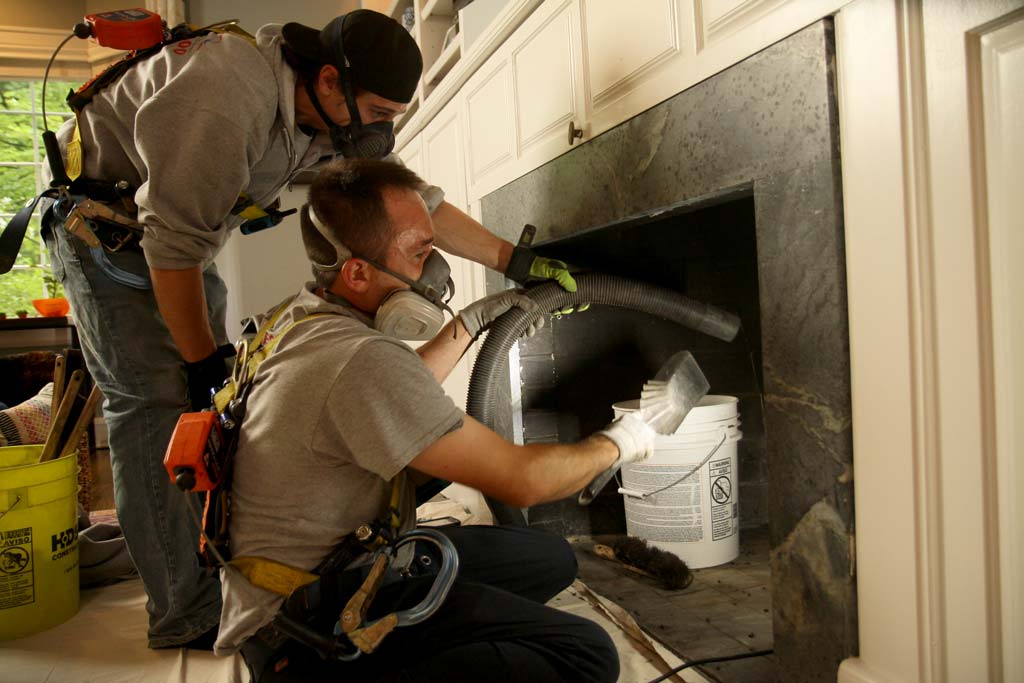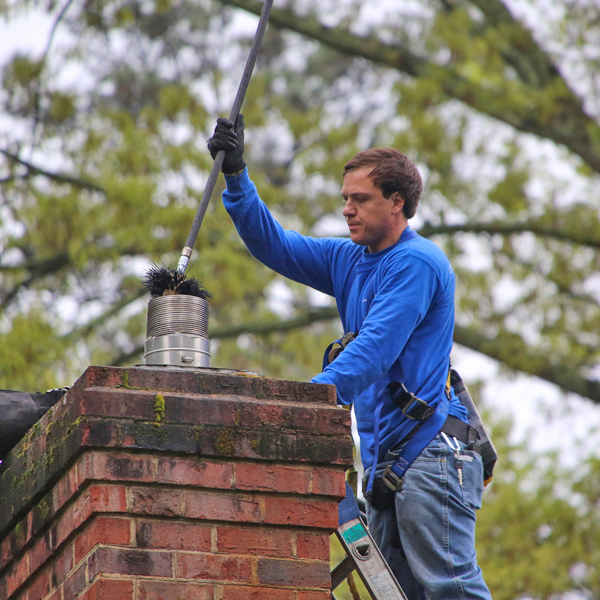Chimney Clean San Jose Solutions: Your Trusted Companion for a Safer Home
Chimney Clean San Jose Solutions: Your Trusted Companion for a Safer Home
Blog Article
Smokeshaft Cleaning: A Step-by-Step Guide to Maintaining a Healthy Fireplace
Routine smokeshaft cleansing is a necessary part of this upkeep routine. By following these guidelines, you will certainly find out how to collect the needed tools, execute an aesthetic inspection, clear particles and accumulation, sweep the smokeshaft, and finish the final actions for continuous upkeep.
Gathering the Necessary Tools
To start the process of smokeshaft cleaning, the initial action is to gather all the necessary devices. Having the right tools available guarantees a risk-free and effective cleansing process. The necessary tools for chimney cleansing include a smokeshaft brush, a ladder, ground cloth or plastic sheets, a flashlight, gloves, and a dirt mask.
The smokeshaft brush is the key device utilized to remove residue and creosote buildup from the flue - Chimney Sweep San Jose. It is essential to choose a brush that matches the size and shape of your chimney.
Ground cloth or plastic sheets are important for safeguarding the surrounding location from dust and particles. They help make and consist of the mess cleaning simpler. A flashlight is essential for evaluating the smokeshaft's interior for any type of indications of damages or blockages. Handwear covers are essential to protect your hands from residue and other dangerous substances, while a dirt mask helps protect against the breathing of debris.
Carrying Out an Aesthetic Evaluation

Utilizing a flashlight, very carefully check out the indoor walls of the smokeshaft for any type of indications of damages, such as cracks, loosened blocks, or mortar wear and tear. These issues can jeopardize the chimney's structural honesty and pose a severe safety and security hazard. Additionally, check for any signs of water damages, such as staining or efflorescence, as this can suggest a leaky chimney cap or blinking.
Next, check the smokeshaft flue for any blockages. Search for the presence of nesting materials, leaves, or debris that might have accumulated in time (Chimney Sweep San Jose). These obstructions can limit airflow, enhance the risk of carbon monoxide buildup, and impede the chimney's capacity to successfully air vent smoke
Throughout the visual examination, pay close interest to the chimney crown, which is the top surface that secures the smokeshaft from moisture. Try to find cracks or missing items in the crown, as these can enable water to enter the chimney and cause considerable damage.
Clearing Up Particles and Accumulation
After finishing the visual inspection, the next action in chimney cleansing involves clearing up debris and build-up to make sure the correct functioning of the fire place. With time, debris such as fallen leaves, branches, and animal nests can build up in the chimney, obstructing the flow of air and creating possible fire hazards. Additionally, the buildup of creosote, a tar-like compound, is a typical trouble in chimneys. Creosote is developed when wood or fossil fuels are melted, and if not removed routinely, it can cause chimney fires.
To remove particles and build-up, it is essential to utilize the right tools and strategies. A smokeshaft brush, particularly created for this purpose, is made use of to get rid of loosened particles and creosote from the smokeshaft wall surfaces. It is vital to pick a brush that matches the dimension of your chimney to make certain reliable cleaning. Before beginning the cleaning procedure, make certain to cover the fireplace open up to stop particles from falling under the room.
To start, place the brush right into the smokeshaft and move it up and down, rubbing the walls to remove any type of debris or creosote. Make use of a sweeping movement to ensure complete cleaning. It is advised to begin from all-time low and work your way up. As soon as the cleaning is full, use a hoover or a chimney brush expansion to eliminate the dislodged debris from the fire place.

Sweeping the Smokeshaft
The sweeping of the chimney is an important step in maintaining a healthy and balanced fireplace. With time, soot, creosote, and various other debris can gather in the chimney, obstructing the flow of air and potentially creating a dangerous accumulation of combustible products. Routine chimney brushing up not just makes certain proper ventilation however also protects against the threat of smokeshaft fires.
When it involves chimney sweeping, it is extremely recommended to employ a specialist chimney move. These specialists have the understanding and tools essential to safely and successfully get rid of the accumulated particles from your smokeshaft. They will generally start by covering the fire place to prevent any kind of residue or debris from entering your home. Using specific brushes and vacuum equipment, they will after that clean the chimney inside out, guaranteeing that all the buildup is extensively gotten rid of.
It why not try here is essential to keep in mind that the frequency of chimney sweeping depends upon numerous variables, such as the kind of fuel utilized, the quantity of usage, and the kind of smokeshaft. As a general general rule, it is suggested to have your chimney swept and inspected at the very least yearly.
Final Actions and Maintenance
After finishing the smokeshaft sweeping procedure, the initial step in the final upkeep is to inspect the smokeshaft cap and stimulate arrestor. These elements avoid debris, animals, and rainwater from getting in the smokeshaft.

Examine the within of the fireplace for any type of indicators of damage, such as cracks, loosened bricks, or damaged mortar. These issues can influence the architectural honesty and security of the fireplace. If any problems are detected, consult a specialist smokeshaft sweep or mason to address them without delay.
Lastly, think about setting up carbon monoxide gas detectors near the fire place and throughout your home. These tools can detect the existence of this harmful gas, offering an early warning system in situation of a chimney malfunction. Frequently check and replace the batteries in these detectors to ensure their effectiveness.
Verdict
Finally, following a step-by-step guide for chimney cleaning is essential in keeping a healthy and balanced fire place. By collecting the required tools, carrying out an aesthetic examination, removing particles and accumulation, and sweeping the chimney, home owners can make sure the security and efficiency of their fire place. Normal maintenance and cleaning will certainly aid avoid smokeshaft fires and improve air high quality in the home. It is important to focus on smokeshaft cleaning as a component of total home upkeep.
The necessary tools for chimney cleansing consist of a smokeshaft brush, a ladder, drop fabrics or plastic sheets, a flashlight, look what i found gloves, and a dirt mask.
A smokeshaft brush, specifically designed for this objective, is made use of to eliminate loose debris and creosote from the smokeshaft wall surfaces. Normal smokeshaft sweeping not just makes sure correct air flow yet additionally protects against the threat of smokeshaft fires.
When it comes to smokeshaft sweeping, it is very suggested to employ a professional smokeshaft move. After completing the chimney sweeping procedure, the very first action in the last upkeep is to inspect the chimney cap and trigger arrestor.
Report this page